-
 Bitcoin
Bitcoin $108,489.6704
1.13% -
 Ethereum
Ethereum $2,502.0528
2.92% -
 Tether USDt
Tether USDt $1.0002
0.00% -
 XRP
XRP $2.1941
0.51% -
 BNB
BNB $655.3375
1.00% -
 Solana
Solana $151.5977
1.27% -
 USDC
USDC $0.9999
0.00% -
 TRON
TRON $0.2768
0.32% -
 Dogecoin
Dogecoin $0.1676
2.86% -
 Cardano
Cardano $0.5675
0.98% -
 Hyperliquid
Hyperliquid $40.6109
7.48% -
 Bitcoin Cash
Bitcoin Cash $500.7746
2.09% -
 Sui
Sui $2.8328
2.03% -
 Chainlink
Chainlink $13.4452
1.26% -
 UNUS SED LEO
UNUS SED LEO $9.1623
0.39% -
 Avalanche
Avalanche $18.2267
2.24% -
 Stellar
Stellar $0.2382
0.00% -
 Toncoin
Toncoin $2.8885
1.68% -
 Shiba Inu
Shiba Inu $0.0...01159
0.91% -
 Litecoin
Litecoin $87.1827
0.88% -
 Hedera
Hedera $0.1511
2.90% -
 Monero
Monero $315.4992
-0.59% -
 Polkadot
Polkadot $3.4663
2.34% -
 Bitget Token
Bitget Token $4.6118
-0.65% -
 Dai
Dai $1.0000
-0.01% -
 Ethena USDe
Ethena USDe $1.0003
0.02% -
 Uniswap
Uniswap $7.2989
4.69% -
 Pepe
Pepe $0.0...01003
5.73% -
 Aave
Aave $275.5616
7.15% -
 Pi
Pi $0.5181
-2.49%
Is it a false signal if the moving average crosses but the volume shrinks?
A moving average crossover with shrinking volume often signals weak momentum, suggesting the price move may lack support and could reverse.
Jun 30, 2025 at 03:21 pm
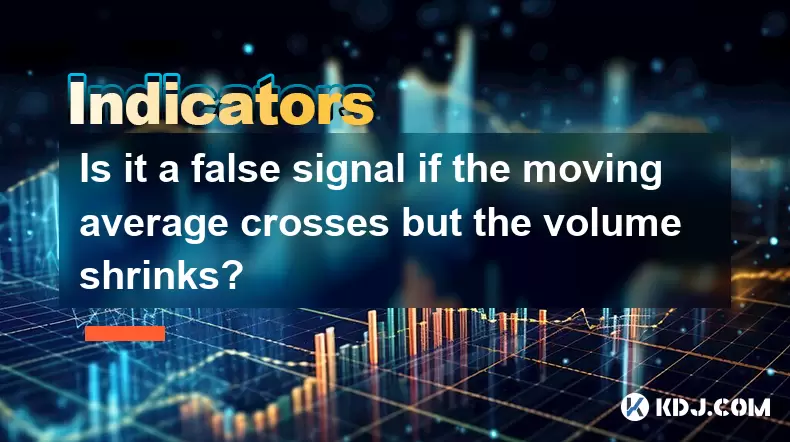
Understanding Moving Average Crossovers
A moving average crossover is one of the most commonly used technical indicators in cryptocurrency trading. It involves plotting two moving averages — typically a short-term (e.g., 9-day) and a long-term (e.g., 21-day) — on a price chart. When the shorter-term moving average crosses above the longer-term one, it's considered a bullish signal, while a cross below is seen as bearish.
Traders often rely on these crossovers to make entry or exit decisions. However, not all crossovers result in significant price movements. One critical factor that traders monitor alongside these signals is volume.
Volume represents the number of assets traded during a specific period. A rising volume usually confirms the strength behind a price move, while shrinking volume may suggest a lack of conviction among market participants.
What Happens When Volume Shrinks During a Crossover?
When a moving average crossover occurs but is accompanied by declining volume, it raises questions about the validity of the signal. In many cases, this combination can indicate a false signal — meaning the price movement may not sustain itself.
For example, imagine a scenario where Bitcoin’s 9-day moving average crosses above its 21-day moving average. This would normally be interpreted as a sign of strengthening momentum. However, if this happens while trading volume is significantly lower than average, it suggests that few traders are participating in the move. As a result, the rally could quickly reverse.
This phenomenon is especially relevant in the crypto market due to its high volatility and susceptibility to manipulation. Low-volume crossovers can easily be triggered by large orders from whales or bots without real market consensus.
- Check the relative volume compared to the previous 10–20 candles.
- Look for confirmation in subsequent candlesticks after the crossover.
- Compare with other indicators, such as RSI or MACD, to assess momentum.
How to Differentiate Between Real and False Signals
Identifying whether a moving average crossover is genuine requires more than just observing volume alone. Traders must consider several additional factors:
- Price action confirmation: After the crossover, does the price continue to move in the expected direction? If not, it might be a false signal.
- Support and resistance levels: Is the crossover occurring near a key level that could cause price to stall or reverse?
- Market sentiment: Are there broader macroeconomic or news-driven reasons for the price movement?
In particular, volume divergence can serve as an early warning sign. For instance, if the price makes a new high but the volume doesn’t confirm the move, it may indicate that buyers are losing interest.
Another effective method is using the On-Balance Volume (OBV) indicator. OBV adds volume on up days and subtracts it on down days. If OBV is trending downward while price is rising, it suggests that the uptrend lacks support from increasing buying pressure.
Case Study: Ethereum Moving Average Crossover With Low Volume
Let’s examine a hypothetical case involving Ethereum (ETH). Suppose ETH experiences a bullish moving average crossover on a 1-hour chart. The 9-period EMA crosses above the 21-period EMA, which is typically viewed as a buy signal.
However, upon closer inspection, the volume bars during the crossover are much smaller than the average volume over the past 24 hours. Additionally, the next few candlesticks fail to push the price higher and instead form a bearish engulfing pattern.
In this scenario:
- The initial signal appears bullish, but volume doesn’t support it.
- Price fails to follow through, indicating weakness.
- Other technical indicators like RSI show overbought conditions without confirming strength.
This example illustrates how relying solely on a moving average crossover without considering volume can lead to poor trading decisions.
Tools and Techniques to Confirm Crossovers
To avoid being misled by false signals, traders should integrate multiple tools into their analysis. Here are some practical methods:
- Volume profile: Helps identify areas where the most trading activity occurred. A crossover near value areas may have more significance.
- Ichimoku Cloud: Offers insights into trend strength and momentum. A crossover within a strong cloud may offer better reliability.
- Fibonacci retracement levels: Can highlight potential reversal zones where crossovers might carry more weight.
Additionally, using multi-timeframe analysis can provide clarity. For example, a bullish crossover on the 1-hour chart may be contradicted by a bearish trend on the daily chart. In such cases, traders should exercise caution even if the immediate signal seems positive.
It’s also useful to track order book depth and market depth charts to understand whether large buy or sell walls are influencing the price movement independently of broader market participation.
Frequently Asked Questions
Q: Can a moving average crossover ever be reliable without volume confirmation?
A: While volume increases the reliability of a moving average crossover, it's not always necessary. In strongly trending markets, crossovers can still be valid even with moderate volume, especially when supported by fundamentals or sentiment.
Q: How do I measure if volume is "shrinking" effectively?
A: Compare the current volume bar to the average volume of the last 10–20 periods. If it’s significantly below average (e.g., less than 50% of the mean), it may indicate weakening momentum.
Q: What timeframes work best for analyzing volume alongside moving averages?
A: Shorter timeframes like 1-hour or 4-hour charts are ideal for active traders, while daily charts suit longer-term investors. Consistency across timeframes can increase confidence in a signal.
Q: Do false crossovers occur more frequently in certain cryptocurrencies?
A: Yes, smaller-cap altcoins with low liquidity and thin order books are more prone to false signals due to easier manipulation and erratic volume patterns.
Disclaimer:info@kdj.com
The information provided is not trading advice. kdj.com does not assume any responsibility for any investments made based on the information provided in this article. Cryptocurrencies are highly volatile and it is highly recommended that you invest with caution after thorough research!
If you believe that the content used on this website infringes your copyright, please contact us immediately (info@kdj.com) and we will delete it promptly.
- Bitcoin's Bumpy Ride: Profit-Taking Slows Momentum, What's Next?
- 2025-06-30 20:30:11
- Bitcoin's Price Stall: Decoding the ETF Inflows Mystery
- 2025-06-30 20:30:11
- Ripple XRP, Bitcoin, and Solaris Presale: What's the Buzz?
- 2025-06-30 18:50:11
- SpaceX, Mirror Tokens, and Investors: A Wild Ride to the Future?
- 2025-06-30 19:10:22
- Arbitrum (ARB) and Robinhood: Partnership Rumors Fuel Price Surge to $0.4289?
- 2025-06-30 19:10:22
- Jasmy Coin, Bitcoin, and the Rise of Solaris Presale: What's the Buzz?
- 2025-06-30 18:30:12
Related knowledge
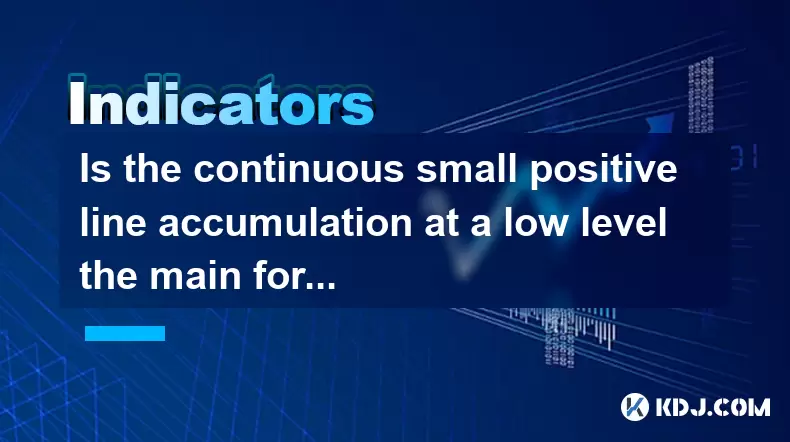
Is the continuous small positive line accumulation at a low level the main force to build a position?
Jun 30,2025 at 08:15pm
Understanding the Concept of Continuous Small Positive Line AccumulationIn cryptocurrency trading, continuous small positive line accumulation refers to a pattern where an asset experiences multiple consecutive candlesticks or bars that close higher than they open, but with relatively low volume and minimal price movement. This phenomenon is often obser...
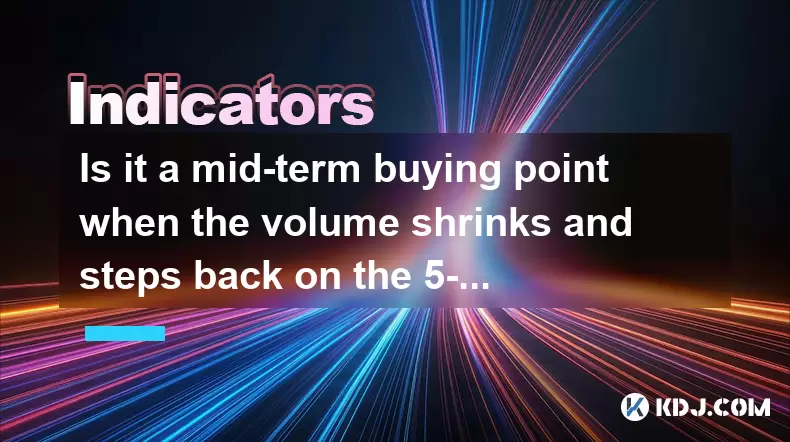
Is it a mid-term buying point when the volume shrinks and steps back on the 5-week line in the upward trend?
Jun 30,2025 at 07:49pm
Understanding the 5-Week Moving Average in Cryptocurrency TradingIn cryptocurrency trading, technical indicators such as the 5-week moving average are widely used to assess long-term trends. This indicator smooths out price volatility over a five-week period and provides traders with a clearer picture of the direction in which an asset is moving. When a...
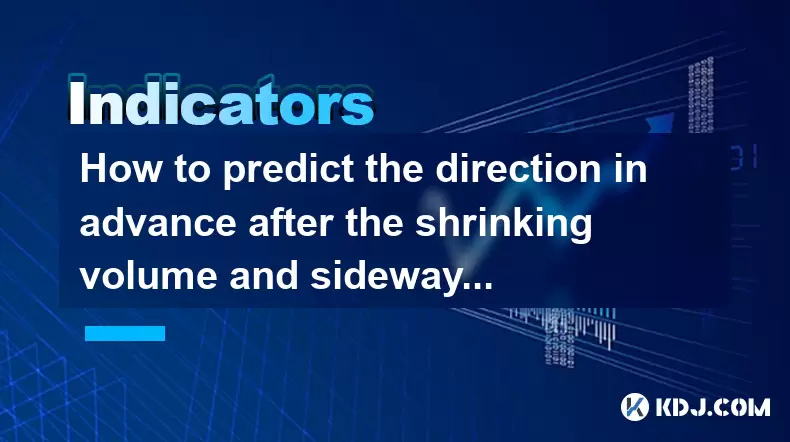
How to predict the direction in advance after the shrinking volume and sideways shock?
Jun 30,2025 at 08:57pm
Understanding Shrinking Volume and Sideways ShockIn the cryptocurrency market, shrinking volume refers to a period where trading activity significantly decreases. This often indicates a lack of interest or uncertainty among traders regarding the next price movement. Simultaneously, sideways shock occurs when the price moves within a narrow range without...
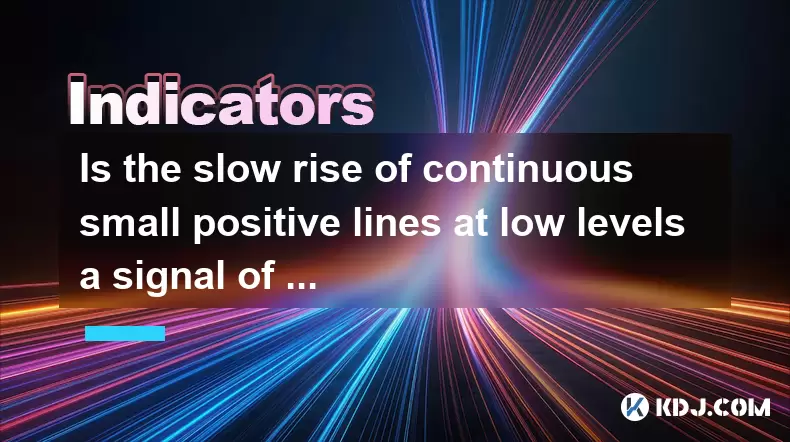
Is the slow rise of continuous small positive lines at low levels a signal of the main force absorbing funds?
Jun 30,2025 at 07:00pm
Understanding the Concept of Continuous Small Positive Lines in CryptocurrencyIn the realm of cryptocurrency trading, price patterns are often analyzed to predict future movements. One such pattern is the slow rise of continuous small positive lines at low levels, which refers to a situation where an asset’s price gradually increases over time through a...
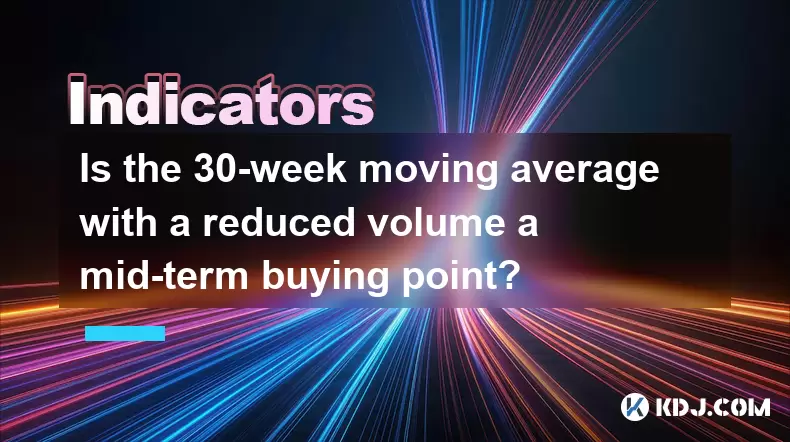
Is the 30-week moving average with a reduced volume a mid-term buying point?
Jun 30,2025 at 08:01pm
Understanding the 30-Week Moving Average in Cryptocurrency TradingThe 30-week moving average is a popular technical indicator used by traders to assess long-term trends in cryptocurrency markets. Unlike shorter timeframes such as the 50-day or 200-day moving averages, the 30-week version smooths out price data over a longer duration, reducing noise and ...
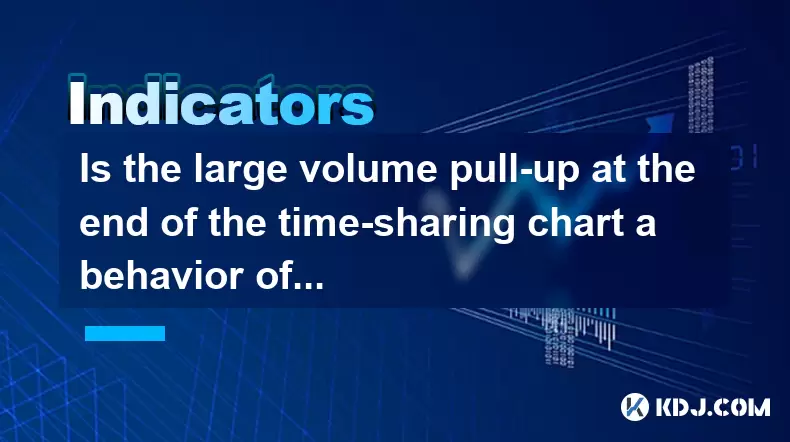
Is the large volume pull-up at the end of the time-sharing chart a behavior of inducing more?
Jun 30,2025 at 05:56pm
Understanding the Time-Sharing Chart in Cryptocurrency TradingIn the world of cryptocurrency trading, time-sharing charts are essential tools used by traders to analyze price movements within a specific timeframe. These charts typically display data in intervals such as 1-minute, 5-minute, or 15-minute segments, offering granular insights into how price...

Is the continuous small positive line accumulation at a low level the main force to build a position?
Jun 30,2025 at 08:15pm
Understanding the Concept of Continuous Small Positive Line AccumulationIn cryptocurrency trading, continuous small positive line accumulation refers to a pattern where an asset experiences multiple consecutive candlesticks or bars that close higher than they open, but with relatively low volume and minimal price movement. This phenomenon is often obser...

Is it a mid-term buying point when the volume shrinks and steps back on the 5-week line in the upward trend?
Jun 30,2025 at 07:49pm
Understanding the 5-Week Moving Average in Cryptocurrency TradingIn cryptocurrency trading, technical indicators such as the 5-week moving average are widely used to assess long-term trends. This indicator smooths out price volatility over a five-week period and provides traders with a clearer picture of the direction in which an asset is moving. When a...

How to predict the direction in advance after the shrinking volume and sideways shock?
Jun 30,2025 at 08:57pm
Understanding Shrinking Volume and Sideways ShockIn the cryptocurrency market, shrinking volume refers to a period where trading activity significantly decreases. This often indicates a lack of interest or uncertainty among traders regarding the next price movement. Simultaneously, sideways shock occurs when the price moves within a narrow range without...

Is the slow rise of continuous small positive lines at low levels a signal of the main force absorbing funds?
Jun 30,2025 at 07:00pm
Understanding the Concept of Continuous Small Positive Lines in CryptocurrencyIn the realm of cryptocurrency trading, price patterns are often analyzed to predict future movements. One such pattern is the slow rise of continuous small positive lines at low levels, which refers to a situation where an asset’s price gradually increases over time through a...

Is the 30-week moving average with a reduced volume a mid-term buying point?
Jun 30,2025 at 08:01pm
Understanding the 30-Week Moving Average in Cryptocurrency TradingThe 30-week moving average is a popular technical indicator used by traders to assess long-term trends in cryptocurrency markets. Unlike shorter timeframes such as the 50-day or 200-day moving averages, the 30-week version smooths out price data over a longer duration, reducing noise and ...

Is the large volume pull-up at the end of the time-sharing chart a behavior of inducing more?
Jun 30,2025 at 05:56pm
Understanding the Time-Sharing Chart in Cryptocurrency TradingIn the world of cryptocurrency trading, time-sharing charts are essential tools used by traders to analyze price movements within a specific timeframe. These charts typically display data in intervals such as 1-minute, 5-minute, or 15-minute segments, offering granular insights into how price...
See all articles

























































































